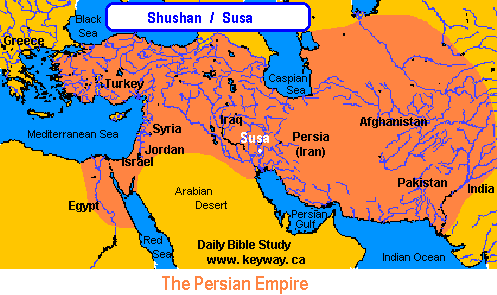I have been feeling “dry” through Zechariah (well, overwhelmed with the text is more like it). But NOW we get 2 days to soak up a great book called Esther. Here is what we know:
- a Persian King named Cyrus decreed that the captives be released and were given provisions to return to Jerusalem to rebuild the temple.
- out of about 1 million people only 50,000 returned. That’s 5%!
- Why? Well, while they were in captivity they had established a new life. New families. New Cultures. New Businesses. Many had grown fond of their new life.
- What was in Jerusalem? Not much. On top of that, a ton of work to rebuild a Temple had to be done, many of them had never experienced the first time.
Esther is a book set at the same time the Temple is being built from the viewpoint of the captives that chose to stay in Babylon. Interesting!

Should the book of Esther be in the Bible?? Here is what is NOT mentioned in the Book of Esther:
- The Lord (what???)
- Prayer
- Faith
- The Law of Moses
- Jerusalem (except that they were exiles from there)
- It is never quoted or referenced in the New Testament
- No miracles (or anything supernatural)
- It was not induced in the Dead Sea Scrolls
- Did I mention no work recognizing The Lord?
Still, the answer is YES.
The Lord’s Name may not be there BUT His hand is!!
Speaking of His name: fun fact- scholars have found hidden tetragrammatons in the scriptures. What’s that you ask? It is when the first letter of the words in a sentence or phrase makes a word. In Esther 5:4 it says: “If it pleases the king,”. The first letters make up the word “YHWH” in Hebrew. The Lord is in the details.
Esther’s Jewish name was “Hadassah” which means “myrtle”. The myrtle tree was native to Babylon.
Esther is her Persian name meaning – “Star”. The myrtle tree bears a beautiful starflower.
Many of the Jewish captives were given 2 names: Jewish and Persian.
The book takes place during the Persian Period and covers about a 10 year period.
The Theme of this book is Providence.
Providence:
- the protective care of God or of nature as a spiritual power.
- timely preparation for future eventualities.
My view of God is “all-knowing” however Providence is different. It is Foresight. He knows it before it happens. So where does Free Will fit here? We do not know what a day might bring BUT God foresees our free will choices and can act to accomplish His plans because of that foreknowledge. Cool huh!
Some things to ponder:
- Providence: even though people do not acknowledge God’s presence (or think He is absent) He is always at work.
- The Lord never coerces people but God uses their decisions. (Haman in the book will build gallows for Modecai, but God used the gallows to hang Haman instead).
- God gives people genuine freedom and yet causes things to turn out the way He wants them in the end.
- If we believe in God’s Providence we can live in confidence and courage.
- We are in control of our destiny, but God uses all circumstances in history for His ultimate purpose.
I haven’t talked about the Book of Esther BECAUSE I want it to fall fresh on you when you read it! Enjoy!
Here is a map for you to get your bearing!

I love the explanation of “free will.”
I really had to think about that for awhile because it always confuses me. We have free will God has given us but he already knows the end result!? It’s a tough one for me.
LikeLiked by 1 person
Think of it this way…You can choose plan A or plab B. It won’t mess up God’s plan, becuase He will use our decisions (good or bad) to still fulfill his plan.
LikeLike